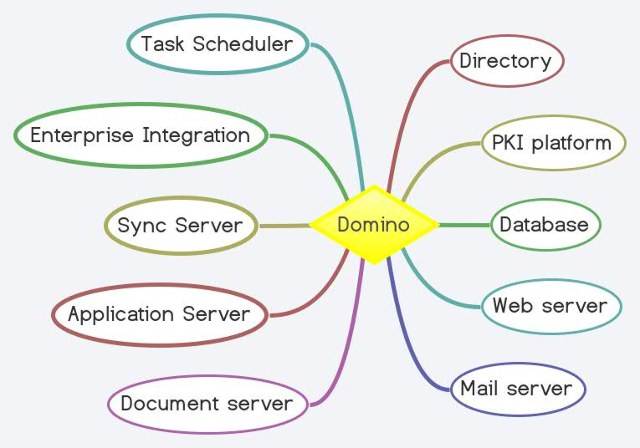Let's ditch IBM Notes and Domino
Finally you decided it is time to move on, legacy no longer means " tried and tested" but " we need to move one" to you. After all you never really liked Cher.
Notes data is available via LotusScript, dotNet (through the COM bridge), in Java, Corba, C++, XML, REST, MIME, so how hard can it be? Actually not very hard, you just need to:
Migrating the users' encryption keys and secured documents could be considered "an application function", so you dodge a potential problem here.
Getting the data out, short of that pesky RichText content (yeah, the one with sections and embedded OLE controls), is easy - never mind reader and author access protection.
The transformation into the target format happens in a black box (the same the local magician uses for his tricks), you buy from a service provider, so that's covered, leaves platform and applications. (Bring your own <irony /> tags)
Lets have a look at the moving parts (Listing OpenSource components only, you can research commercial ones on your own):

Once you got all the moving parts in place, you need to redevelop your apps. Don't be fooled, but run the analysis, to see the full magnitude of that task ahead.
As usual YMMV
Notes data is available via LotusScript, dotNet (through the COM bridge), in Java, Corba, C++, XML, REST, MIME, so how hard can it be? Actually not very hard, you just need to:
- Find sutiable replacement application platform(s)
- Rewrite the applications (don't dream: there is no such thing as "migrate an app")
- Migrate your users
- Migrate your data
Migrating the users' encryption keys and secured documents could be considered "an application function", so you dodge a potential problem here.
Getting the data out, short of that pesky RichText content (yeah, the one with sections and embedded OLE controls), is easy - never mind reader and author access protection.
The transformation into the target format happens in a black box (the same the local magician uses for his tricks), you buy from a service provider, so that's covered, leaves platform and applications. (Bring your own <irony /> tags)
Lets have a look at the moving parts (Listing OpenSource components only, you can research commercial ones on your own):

- Directory : OpenLDAP comes with most Linux distributions and is well understood. It doesn't take you down the propriarty extension hell (and you can remove obsolete schema parts) - it requires an RDBMS to run (not a blue one)
- PKI : PrimeKey
- Sync Server : For the database you could get away with the database, but you need one for mobile: Z-Push
- Document Server : Pick any - or go with: Dropbox, Box, Copy etc.
- Database Server : Notes is the mother of NoSQL, so you want to pick one of those: CouchDB, OrientDB or you go with DB/2 PureXML
- Application Server : XPages is full fledged JSF, you you might opt for TomEE, but you will need some extra libraries. Or you ditch Java and adopt the cool kid on the block
- Mail Server : the venerable SendMail does, as the name implies, send mail. Goes nicely with Mozilla Thunderbird
- Web Server : That's easy. There's NGinX or Apache
- Enterprise Integration : Might be quite tricky. Domino's DECS and LEI shuffle data from all sorts of sources. OpenESB might do the trick
- Task scheduling : You can use OS level CRON (Just find a nice UI) or application level Quartz
- configured
- hardened
- populated with data
Once you got all the moving parts in place, you need to redevelop your apps. Don't be fooled, but run the analysis, to see the full magnitude of that task ahead.
As usual YMMV
Posted by Stephan H Wissel on 29 May 2014 | Comments (7) | categories: IBM Notes
